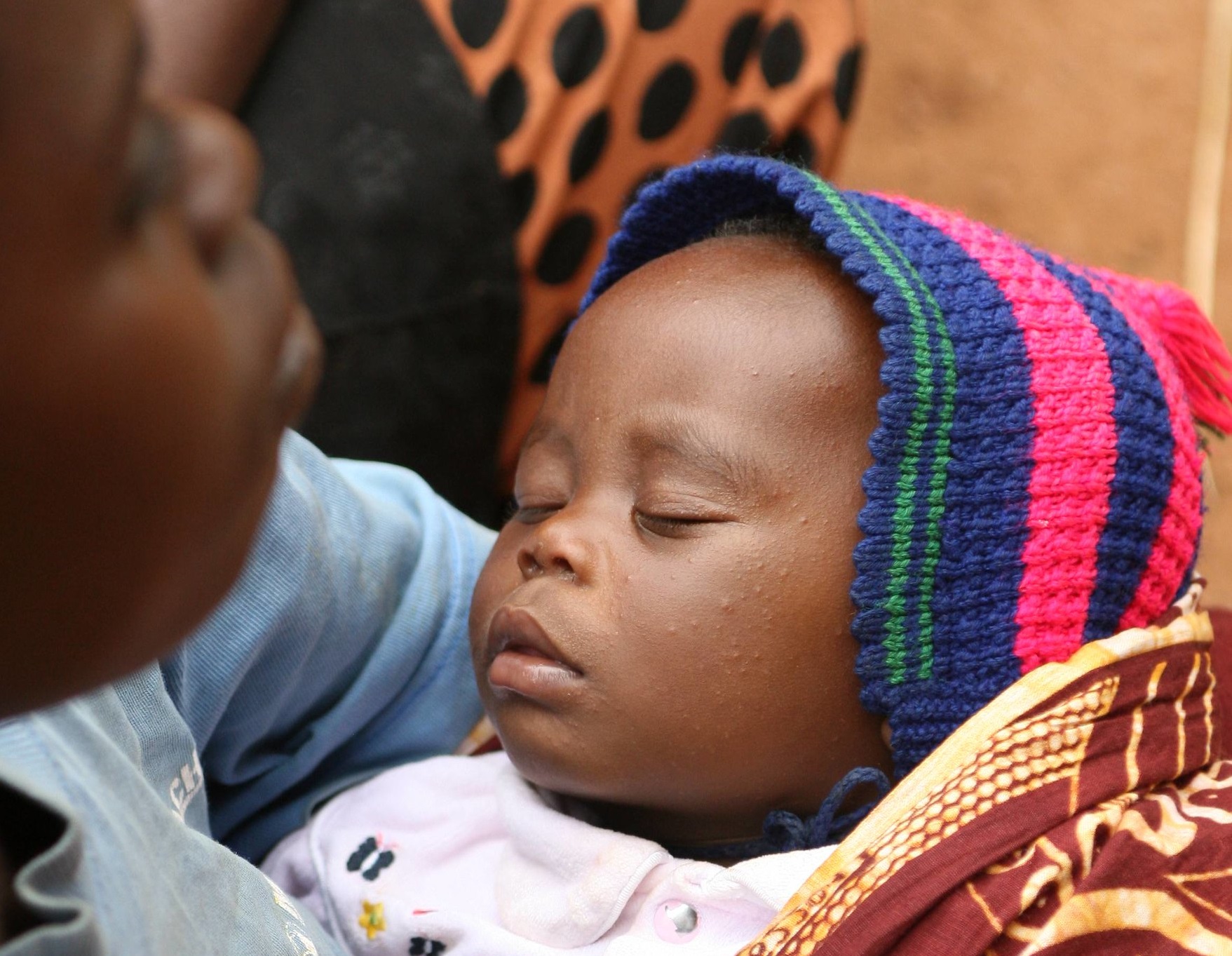
Clondette Vuganeza and her 4-month old baby boy Kwizera who was very sick and treated by Cansilde Kampogo who is a community health worker in the village of Mayaba in Nyaraguru. (Photo by Concern Wordwide)
Rwanda is set to witness significant demographic changes over the next decade to 2032, with projections indicating some worrying growth trends across its provinces.
The general growth of Rwanda’s national population is projected rise by 21.66%, reaching over 16.4 million.
Kigali City will experience the largest population increase, while Western Province is projected to see the lowest growth rate among the provinces, according to the latest population projections by the National Institute of Statistics of Rwanda (NISR).
Kigali: Leading the Way in Population Growth
Kigali City, the economic and administrative hub of Rwanda, is expected to lead the nation in terms of population growth. The city’s total population is projected to rise from 1,813,720 in 2023 to 2,631,832 by 2032, representing a staggering 45.09% increase.
This rapid expansion underscores Kigali’s role as a magnet for migration due to its urban development, employment opportunities, and improved living conditions.
The young population remains a dominant force, with the 0–4 age group growing by 38.8% during this period.
However, the aging population trend is also evident, as the number of individuals aged 65+ years is projected to grow by 11.9%, reflecting an increasing need for elderly care services.
Western Province: The Slowest Growing Region
In contrast, Western Province is projected to experience the lowest population growth among all provinces. Its total population is expected to increase from 2,922,533 in 2023 to 3,197,688 by 2032, marking a modest 9.42% rise.
This slower growth can be attributed to factors such as lower birth rates and rural-to-urban migration trends. Notably, the province’s younger population (ages 0–4) will grow by only 5%, while the school-age group (5–9 years) is expected to decline by nearly 10%.
These figures highlight the challenges faced by rural areas in retaining younger populations and underscore the importance of investing in regional development to balance national growth.
Eastern Province: Significant Expansion
Eastern Province stands out as another region experiencing robust growth, with its population projected to increase by 33.70% over the decade—from 3,665,641 in 2023 to 4,900,504 in 2032.
This growth is driven largely by increases in younger age groups, particularly those aged 0–4 years, which are expected to grow by 15.8%. The province’s strong agricultural base and ongoing infrastructure projects contribute to its appeal, attracting both residents and investors alike.
Southern and Northern Provinces: Moderate Growth
Southern and Northern Provinces are exhibiting moderate population growth patterns. Southern Province’s population is projected to rise by 7.53%, from 3,023,547 in 2023 to 3,251,288 in 2032.
Meanwhile, Northern Province is expected to see a 17.75% increase, growing from 2,073,693 to 2,441,719 over the same period.
Both provinces show signs of stabilization in their younger populations but notable growth in middle-aged and elderly cohorts, reflecting broader national trends toward an aging society.
National Trends: Aging Population and Children
At the national level, Rwanda’s population dynamics reveal critical shifts. The elderly population (aged 65+ years) is projected to grow significantly, increasing by approximately 21.5% nationwide by 2032. This growth highlights the need for enhanced healthcare systems, pension reforms, and social programs tailored to meet the needs of older adults.
On the other hand, the youngest segment of the population—children aged 0–4 years—is also expanding, albeit at a slower pace compared to previous decades.
Nationally, this group is expected to grow by around 10%, underscoring the continued importance of early childhood education and health services.
Despite this growth, there is evidence of declining birth rates in certain regions, particularly in urban areas like Kigali and Western Province.
Implications for Development
These demographic shifts may carry profound implications for Rwanda’s development agenda. The growing elderly population necessitates investments in geriatric care, retirement planning, and community support systems.
At the same time, the large youth cohort presents opportunities for economic growth through increased workforce participation, provided that adequate education and job creation measures are implemented.
For rural provinces like Western and Southern, addressing migration pressures and fostering local economic development will be crucial to ensuring balanced growth.
Meanwhile, urban centers like Kigali must prepare for the challenges associated with rapid urbanization, including housing shortages, traffic congestion, and environmental sustainability.
As Rwanda moves forward, these projections serve as a valuable guide for policymakers, planners, and stakeholders.
By understanding and responding to the unique demographic profiles of each province, the country can better allocate resources, design targeted interventions, and ensure inclusive development for all Rwandans.
With careful planning and strategic investment, Rwanda is well-positioned to harness its demographic dividends and build a prosperous future for generations to come.
The elderly population in Eastern Province is expected to grow highest over the next decade, increasing by 34.17% from 2023 to 2032.
Western Province is projected to experience a decline in its elderly population, with a decrease of 2.70%. This suggests that fewer people are reaching older ages or that there may be migration out of the province among older individuals.
Kigali City is projected to see the largest increase in its young child population, growing by 38.65%. This reflects high birth rates and continued urban migration into the city.
Southern Province will witness minimal growth in its young child population, with only a 2.73% increase over the decade. This could indicate declining birth rates or rural-to-urban migration patterns.

